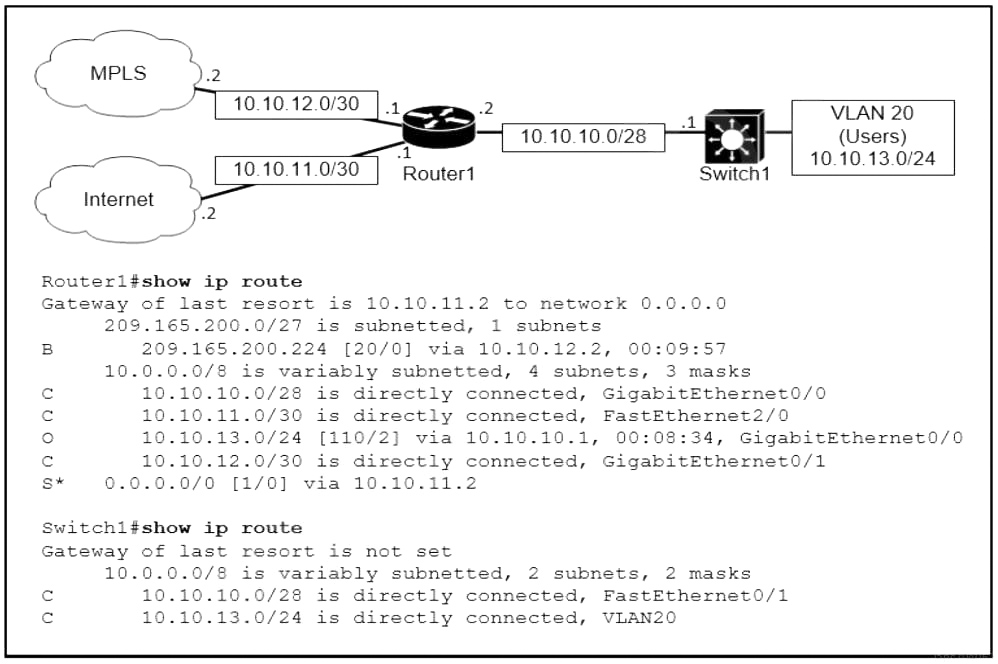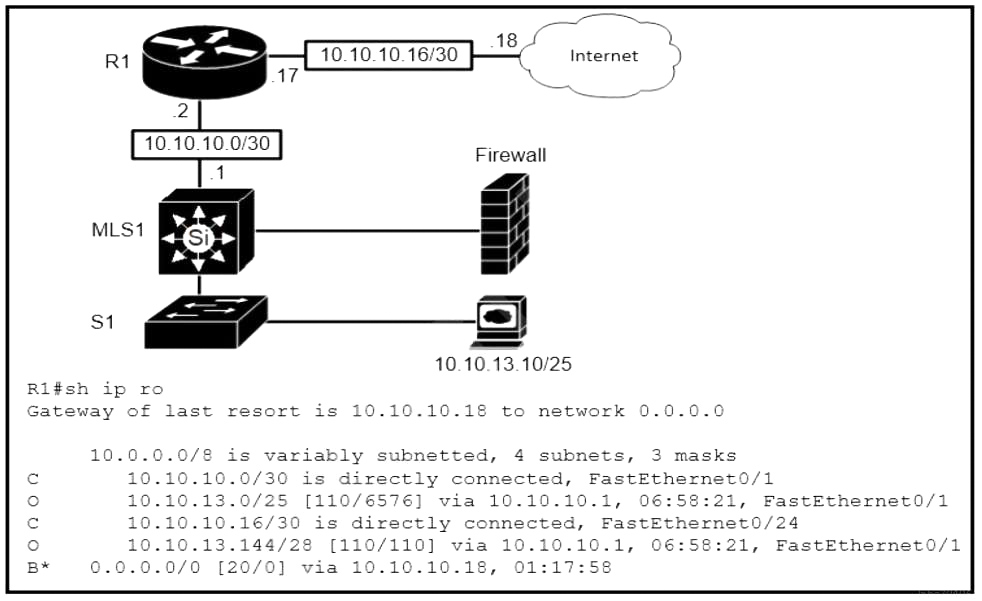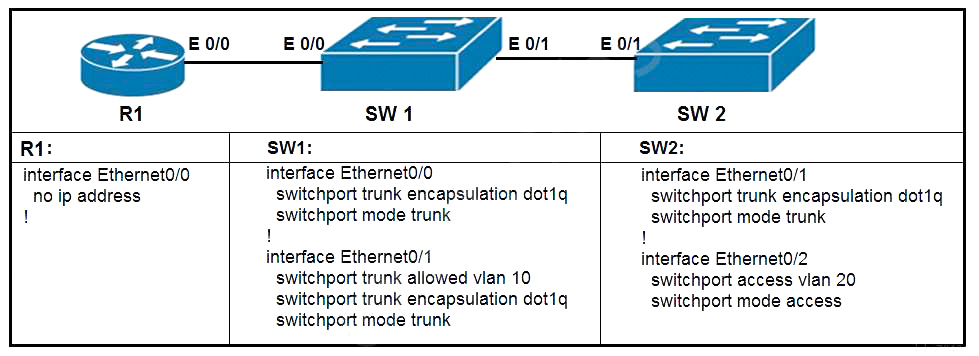When a floating static route is configured, which action ensures that the backup route is used when the primary route fails?
A. The administrative distance must be higher on the primary route so that the backup route becomes secondary.
B. The default-information originate command must be configured for the route to be installed into the routing table.
C. The floating static route must have a lower administrative distance than the primary route so it is used as a backup.
D. The floating static route must have a higher administrative distance than the primary route so it is used as a backup
A. The administrative distance must be higher on the primary route so that the backup route becomes secondary.
B. The default-information originate command must be configured for the route to be installed into the routing table.
C. The floating static route must have a lower administrative distance than the primary route so it is used as a backup.
D. The floating static route must have a higher administrative distance than the primary route so it is used as a backup





